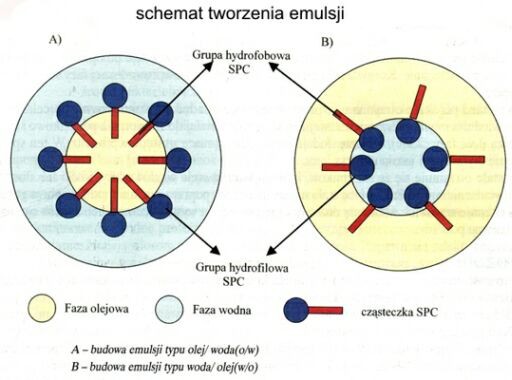 Surfactants.
Surfactants.
Detergents are chemical substances, whose aqueous solutions have the ability to remove dirt from the surface of various objects.
This ability is shown by substances, which lower the surface tension of water, therefore they are called substances (means) surfactants.
Aqueous solutions of surfactants moisten the surfaces of the washed items, have the ability to penetrate into their crevices and depressions, surround the dirt particles with a thin layer, they break them up and prevent the repeated deposition of dirt on the washed items.
The range of detergents is very numerous. The basic ones are soaps and synthetic washing agents, colloquially known as detergents. There are a number of things that depend on a detergent performance, such as: type of surfactant and its content in the washing bath, type of contamination, water hardness in the washing bath, the action of mechanical energy during washing, method of contact of the laundry material with the wash bath, type of washed material, washing temperature and others.
Water hardness and its influence on washing and washing processes.
The water used for washing should be soft, thus devoid of calcium and magnesium salts. Water with a high content of these salts is called hard water. Depends on the type of calcium salts dissolved in the water and magnesium, a distinction is made between transient hardness (carbonate) and permanent hardness (non-carbonate).
■ Temporary hardness is caused by bicarbonates dissolved in water (so-called. acid carbonates) calcium and magnesium, Ca(HCO3)2 i Mg(HCO3)2. These salts decompose at temperatures above 70 ° C, precipitating calcium and magnesium carbonates that are sparingly soluble in water (CaCO3 i MgCO3). As a result of heating, the content of calcium and magnesium ions in the water decreases and the water becomes softer. The transient hardness can therefore be removed by boiling the water. Boiling such water is accompanied by the deposition of calcium and magnesium carbonates on the surface of the vessel, forming the so-called. boiler stone.
■ Permanent hardness is caused by calcium and magnesium salts, in the form of chlorides, sulfates and nitrates, dissolved in water. It cannot be removed by boiling water.
Both types of hardness make up the so-called. total water hardness.
The unit of water hardness according to the SI System of Units and Measures is millimol / dm3. However, the commonly used unit is still milival / dm3, and in practice, often the so-called. German degree (°n). The value of 1 ° n represents the hardness due to the presence of calcium and magnesium salts, which the content corresponds to 10 mg of calcium oxide (CaO) w 1 dm3 water. To determine the hardness in German degrees, the salt content must be converted, causing the hardness in 1 dm3 water, for the corresponding amount of CaO.
According to German degrees, water can be classified in terms of hardness na:
- very soft water: from 0 do 4°n;
- soft water: from 4 do 8°n;
- medium hard water: from 8 do 12°n;
- quite hard water: from 12 do 18°n;
- hard water: from 18 do 30°n;
- very hard water: above 30 ° n.
Values 1 milivala/dm3 corresponds approximately to a hardness of 2.8°n.
Soft water should be used for washing, preferably very soft. In nature, only water comes from precipitation (rainwater) it is very soft water. The use of water with too high hardness causes, that the salts dissolved in it Calcium and magnesium form various compounds in reaction with surfactants, which are not capable of removing dirt and cause loss of detergent. These compounds can also deposit on the laundry, causing it to turn gray or yellowing. An example of reaction products of soaps, used for washing or washing, with calcium and magnesium salts causing water hardness, are calcium-magnesium soaps. These soaps are practically insoluble in water and precipitate on the washed material in the form of a gray, complete the massacre, contaminating it. The consequence of this process is the loss of soap, which in 100 dm3 water is approx. 16 g of soap for each degree of German hardness.